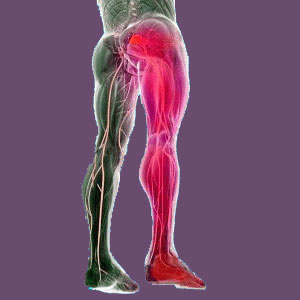
The FAIR Test for piriformis syndrome is one of the standardized diagnostic practices commonly utilized by chiropractors, sports medicine physicians and physical therapists. The test is not conclusive for piriformis syndrome, but can help to strengthen evidence-based processing towards making the diagnosis, as well as assist in eliminating patients who do not test positive for piriformis compression of the sciatic nerve.
FAIR testing is usually used with a battery of other diagnostic practices including the Freiberg test, Pace test and Faber test. When used in combination with a variety of diagnostic protocols, the FAIR test can be a useful tool in any diagnostician’s arsenal. However, it is certainly far from fool-proof when it comes to diagnosing piriformis pain by itself.
This essay details the FAIR diagnostic test for piriformis syndrome. We will discuss the procedure, the benefits and the drawbacks of FAIR evaluation.
What is the FAIR Test for Piriformis Syndrome?
FAIR is an acronym that stands for flexion, abduction and internal rotation. These are the movements that the doctor or therapist will use on the patient’s affected leg(s) in order to evaluate the possibility of piriformis syndrome being the mechanism of the painful complaint.
The test is quick, relatively accurate by diagnostic standards and can be used with other complementary evaluation methods as noted above. Fair testing is noninvasive and does not demonstrate any risk factors when performed properly by a trained healthcare provider.
FAIR Test for Piriformis Syndrome Procedure
Typically, the test is performed with the patient lying on an examination table on their side, with the affected leg on top. The care provider will stand behind the patient and ask them to relax their leg and hip. The care provider will support the leg, while flexing the leg, followed by abducting the leg and immediately rotating the leg. The final position will have the patient’s leg bent at an angle of approximately 90 degrees, the knee touching or close to touching the examination table or even hanging off the edge past the table, and the heel of the foot raised past the patient’s shoulder height.
Alternately, the test can be performed in similar fashion and virtually identical movements using a diversity of different positions, which are useful in specific circumstances, including having the patient lie prone (on their back) or seated. Instead of force applied to the leg by the examiner to elicit a painful or neutral response, the patient might be asked to resist the examiners attempts to move the leg in order to further study the anatomical reaction to the test. Many care providers utilize a variety of positions to perform the FAIR test, as well as some different mobilizations of the leg, in order to judge patient reaction and rule out other possible causative mechanisms of action.
FAIR Test for Piriformis Syndrome Pros and Cons
The test is simple, safe, not particularly painful or frightening to patients. It can be performed by a variety of different types of care providers and repeated as necessary to judge therapeutic results during treatment. The test is also complementary to other common diagnostic practices and can help build a convincing case for the diagnosis of piriformis syndrome in patients who test positive using multiple manipulations. These are all laudable attributes of FAIR testing.
On the downside, FAIR is not deemed to be capable of making a diagnosis unto itself. There are many other reasons why the movement of the leg and hip during the test might produce pain. Additionally, pain might occur in areas not expected from piriformis compression of the sciatic nerve. Therefore, extensive experience with both the test and the complex diagnostic process for piriformis syndrome is essential in order to minimize the chances for misdiagnosis.
[contentblock id=12]
Piriformis Pain > Piriformis Diagnosis > FAIR Test for Piriformis Syndrome




